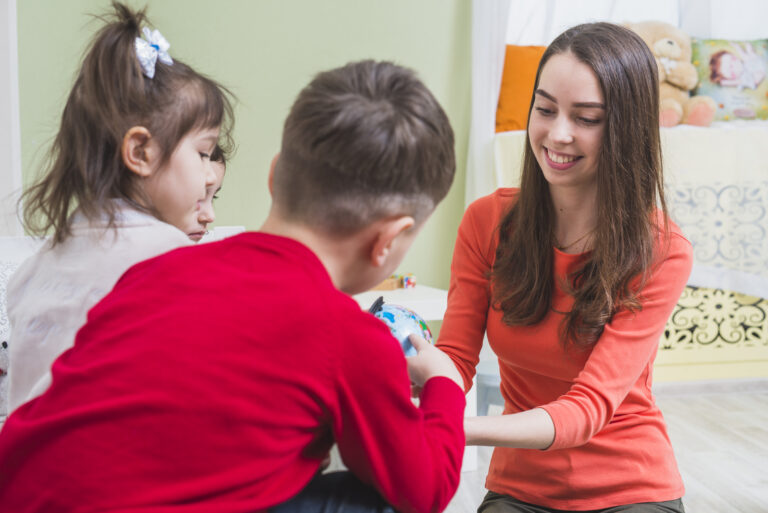Navigating Life With Autism Spectrum Disorder
Navigating the world with Autism Spectrum Disorder (ASD) requires a deep understanding of the unique ways in which individuals experience their surroundings and social interactions. For many, the complexities of the mind associated with ASD, which may also include co-occurring conditions like Tourette Syndrome, demand a tailored approach to learning and living. Caregivers and educators alike assume a critical leadership role in crafting an environment that not only provides security and stability but also ensures every individual has the insurance of a nurturing and adaptive support system. In this article, we delve into effective strategies that bolster communication, reinforce a sense of community, and promote independence through structured routines. Keep reading to discover a world where the neurodiverse is not just supported but truly thrives.
Key Takeaways
- Tailored routines and environments support individuals with ASD to thrive
- Assistive technology enhances communication and engagement for students with ASD
- Creating supportive communities assists families in managing neurodiversity
- Visual aids and play-based activities cultivate language skills in ASD
- Structured visual schedules aid in fostering independence and concentration
Understanding Autism Spectrum Disorder in Daily Life
Autism Spectrum Disorder (ASD) presents a unique set of challenges that can influence every aspect of daily life, from the texture of a chair to the intensity of overhead lights. The journey begins with recognizing the broad range of symptoms and behaviors associated with ASD—which may include atypical reactions to sensory stimuli and variations in social interactions to distinct differences in communication styles and fine motor skills, such as handwriting. For families, especially those considering options like private school education, understanding these signs is crucial. A comprehensive evaluation is the first step toward tailoring routines and environments to better support the complex sensory needs of individuals with ASD, thus enabling them to thrive in various settings.
Identifying the Spectrum of Symptoms and Behaviors
Children on the autism spectrum may find traditional recess activities overwhelming due to their heightened sensitivity to sensory inputs, such as noise and physical contact. Teachers, aware of these challenges, play a pivotal role in moderating the recess environment or introducing modified activities that are more aligned with the children’s needs. By doing so, they can transform recess into a supportive space that promotes social engagement and physical activity.
In addition to modifying schoolyard interactions, schools utilize assistive technology to bolster communication skills among students with ASD. These tools can range from simple picture exchange systems to advanced voice output devices that facilitate meaningful conversation. When integrated into the classroom setting, these technologies serve not only as a bridge to enhance communication but also as a key source of motivation for students to engage actively with their educational material and peers.
Adjusting Daily Routines to Accommodate Sensory Sensitivities
Modifying the daily rhythm for those with autism is pivotal, and it starts with understanding the unique disability presented by ASD. Tailoring an environment to accommodate such differences involves nuanced changes, like positioning a desk to reduce sensory overstimulation. This careful alignment with individual needs can profoundly impact how students process information and thus support optimal brain function.
The tenets outlined in the Individuals with Disabilities Education Act (IDEA) advocate for appropriate learning adaptations that include sensory-friendly classroom adjustments. Educators and parents may also consider making a donation to organizations that work with sensory equipment, ensuring students with ASD have the resources they need to manage sensory challenges effectively throughout their school day.
Building a Supportive Community Around Autism
Navigating the complexities of Autism Spectrum Disorder extends beyond individualized education and therapy—it’s about forging connections within a community that understands and supports these diverse needs. For families affected by ASD, seeking out both local and online support groups presents a significant opportunity to exchange experiences, resources, and strategies that address common challenges, such as difficulty with stimulant processing or muscle tone regulation. Reaching out to those facing similar journeys not only cultivates a supportive network but also enriches understanding among friends and relatives, creating a least restrictive environment for everyone involved. Whether managing dyscalculia, enhancing executive functions, or simply sharing daily triumphs, establishing these relationships is a fundamental step in building a nurturing network that champions the growth and well-being of individuals with autism.
Seeking Out Local and Online Support Groups for Families
Local and online support groups empower families navigating neurodiversity by serving as dynamic platforms for sharing critical information. These groups frequently assist parents and caregivers in designing effective strategies for managing daily routines and school-related tasks like homework, leveraging collective wisdom and skill to make each day more manageable for individuals with autism.
In these collaborative environments, participants exchange experiences and best practices, which can range from discussing specific educational techniques to providing emotional support. The collective input from various members enriches the group’s resource pool, enhancing members’ capacity to address the unique challenges presented by neurodiversity in their loved ones’ lives.
Establishing a Network of Understanding Friends and Relatives
Building an inclusive network starts with education; discussing policy and the challenges faced by individuals with ASD, including those with Asperger syndrome, can lead to greater empathy and understanding. Friends and relatives who comprehend the daily realities of autism contribute to a support system that significantly eases the path toward acceptance and inclusivity.
In the context of higher education, for instance, awareness among peers and faculty can smooth the transition to college for neurodiverse students. A support network informed by studies in clinical psychology can better accommodate nuances related to autism, thus preventing the isolation often felt by individuals with cognitive differences such as dementia or other neurological conditions.
Strategies for Effective Communication
Effective communication is fundamental for individuals with Autism Spectrum Disorder (ASD), shaping how they interact with their environment and interpret the bustling world around them. In a neurodiverse school setting, where students may also grapple with auditory processing disorders, traditional verbal interactions can be especially challenging, as their ability to interpret auditory information might be compromised. Integrating visual aids and non-verbal signals becomes a vital strategy to bridge these gaps in understanding. Utilizing these tools not only enhances clarity and comprehension but also reduces the frustrations that often arise from misunderstood behavior. Caregivers and educators increasingly recognize the immense value of using play and interaction to develop expressive language skills. This focus on experiential learning allows children to explore their self-expression in a nurturing and supportive environment. The goal remains constant: to equip these young individuals with a diverse toolkit of communication strategies that extend well beyond the confines of traditional, paper-based learning environments.
Utilizing Visual Aids and Non-Verbal Signals
Professionals steeped in neuroscience understand that the brain’s intricate wiring can turn background noise into a cacophony for individuals with Autism Spectrum Disorder. Accordingly, they recommend visual aids that speak volumes without a word, reducing reliance on the auditory processing that so often presents hurdles for those on the spectrum.
In settings where the spoken word could be as indigestible as an upset stomach, visual supports like symbols and pictures transcend traditional communication barriers. Embraced across cultures, these tools are akin to medicine, offering clarity and understanding where words may fail, thus easing the connection between individuals with ASD and the world around them.
Encouraging Expressive Language Through Play and Interaction
Play-based activities, designed with a sensory-friendly approach, provide the scaffolding necessary for children with Autism Spectrum Disorder to develop language skills. This strategy, often incorporating elements like role-playing or story narration, can reduce stress and dissipate anxiety, creating an inviting atmosphere that fosters communication.
Podcasts tailored to the neurodiverse community offer an innovative avenue for enhancing language acquisition. By blending engaging storytelling with a structured, sensory-friendly audio format, these digital resources can serve as effective tools for language development, mitigating the factors that frequently contribute to stress and anxiety in traditional learning environments.
Nurturing Independence With Structured Routines
For individuals on the autism spectrum, the significance of a well-structured routine is paramount. A familiar, predictable environment can mitigate the challenges posed by sensory processing issues, offering a safe harbor where nuances of perception do not overwhelm. By utilizing visual schedules, caregivers and educators pave the way for autonomy, reinforcing the concept of time and sequence for those with learning disabilities. The focus on teaching self-care skills, through patient repetition, fosters self-reliance and confidence, accommodating various learning styles that may deviate from the norm. Additionally, the exploration of educational settings, ranging from mainstream classes to more specialized programs, highlights the importance of a tailored learning environment that honors each student’s unique needs. As individuals with autism navigate through life, adjusting to customized routines and supportive community resources becomes a cornerstone for their continued growth and independence.
Creating a Predictable Environment Through Visual Schedules
Visual schedules have become a cornerstone in the quest for fostering concentration in those dealing with Autism Spectrum Disorder (ASD). They act as a reliable framework for individuals whose sensory processing differences, particularly in hearing, may otherwise impede their ability to stay focused on daily tasks.
Leveraging insights from current research, these visual tools also serve as an important supplement to primary care strategies aimed at managing the multifaceted nature of ASD, often characterized not just as a learning difference but a complex neurodevelopmental disease.
Teaching Self-Care Skills Step by Step With Patience and Repetition
Acquiring life skills is integral to fostering independence among individuals with Autism Spectrum Disorder, a process often requiring patience and repetitive teaching methods. Health and personal hygiene become areas of focus, gradually building upon each successful step to ensure comfort and skill retention while mitigating any distress associated with unfamiliar odors or sounds.
The journey of learning self-sufficiency involves breaking down complex tasks into manageable chunks that consider sensory sensitivities—an approach that places importance on repetition to reinforce routines. This incremental learning strategy helps individuals with Autism Spectrum Disorder navigate environments where sound or odor might otherwise impede their progression toward mastering essential health and wellness skills.
Exploring Different Educational Settings, From Mainstream to Specialized
Finding the right educational setting requires a delicate balance that honors each individual’s cognition while considering their diagnosis of autism. In a mainstream classroom, a student might wrestle with the cacophony of a pencil tapping or the shuffle of papers, distracting them from learning due to their distinct sensory processing needs, particularly in proprioception and the vestibular system.
Specialized educational environments provide tailored support that can significantly enhance the learning experience for children with autism. In these settings, the focus shifts to reinforcing each student’s strengths while offering targeted strategies to address challenges in cognition and sensory processing. By incorporating approaches like boosting child development through sensory play, these environments create a foundational platform for academic success that respects and accommodates the unique aspects of an autism diagnosis.




